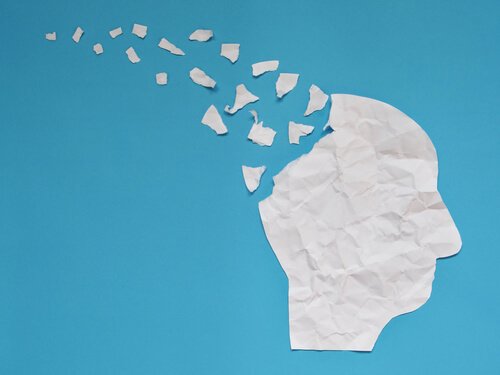How to Help Someone Who's Having a Seizure

Learning how to help someone who’s having a seizure will allow you to give them the best care possible. Although you can’t really stop a seizure, you can help the person avoid more harm.
Epilepsy is a neurological disease that affects the brain’s electrical activity. Although there are different types of epilepsy, most of them are characterized by unpredictable seizures that can have neurological, cognitive, and psychological consequences.
Many things can cause seizures, including lack of sleep or drug abuse. In addition, sports that require rapid breathing, such as soccer or basketball, may trigger epileptic seizures.
In some cases, epilepsy goes away once the affected person reaches puberty, but something can trigger it and make it come back again.
Studies have confirmed that once a person is diagnosed with epilepsy, the first treatment will have a 50% chance of controlling the seizures. A second treatment can improve the prognosis by 15%. As the disease progresses, the treatments will decrease their success rate.
You need to consider three conditions when it comes to choosing a treatment: the patient’s specific requirements, the drug’s pharmaceutical properties, and the caretaker’s experience.

How to help someone who’s having a seizure
Many people believe that when someone’s having a seizure, they completely lose control. However, a seizure usually causes a generalized tonic-clonic crisis. This crisis affects the brain cortex and can make the patient yell, fall, or start shaking without realizing it.
On the other hand, focal seizures occur in a specific area of the brain and may extend to other parts of the cortex. Sometimes, the person can experience an epileptic aura which is a warning sign for an upcoming seizure.
If you want to know how to help someone who’s having a seizure, these are the general guidelines you should follow:
- Stay by the person’s side during the seizure.
- Keep calm.
- Place the person on the floor.
- Gently turn their head to the side. This will help them breathe.
- Keep their head safe so they don’t hit it.
- Clear the area around the person.
- Place something soft and flat, such as a folded jacket, under the person’s head.
- Loosen anything that’s around their neck and may make it difficult for them to breathe.
- You might need to carefully hold their jaw and tilt their head back to improve their breathing.
- Don’t put anything inside their mouth.
- Don’t shake the person nor yell at them.
- Ask any onlookers to stay back. The person who is having the seizure might feel tired, ashamed, or disoriented.
- If necessary, call someone who can provide additional assistance.
“If you have health, you probably will be happy, and if you have health and happiness, you have all the wealth you need, even if it is not all you want.”
-Elbert Hubbard-

When to seek professional assistance
Although some seizures are more dangerous than others, most of them don’t require assistance from emergency responders. The most important thing is to keep the person safe. Thus, you should ask for help if you’re ever under these circumstances:
- This is the first seizure you’ve ever dealt with.
- The affected person is diabetic or pregnant.
- More than five minutes have passed since the seizure started.
- The affected person is now unconscious.
- The person got hurt during the seizure.
- The sufferer has breathing complications after the seizure.
- The person has a high fever.
- The seizure occurred in a body of water.
- The affected person had a second seizure.
If you ever find yourself in this situation, you now know how to help someone who’s having a seizure. If you’re unsure about what to do, remember that you should seek professional assistance.
Learning how to help someone who’s having a seizure will allow you to give them the best care possible. Although you can’t really stop a seizure, you can help the person avoid more harm.
Epilepsy is a neurological disease that affects the brain’s electrical activity. Although there are different types of epilepsy, most of them are characterized by unpredictable seizures that can have neurological, cognitive, and psychological consequences.
Many things can cause seizures, including lack of sleep or drug abuse. In addition, sports that require rapid breathing, such as soccer or basketball, may trigger epileptic seizures.
In some cases, epilepsy goes away once the affected person reaches puberty, but something can trigger it and make it come back again.
Studies have confirmed that once a person is diagnosed with epilepsy, the first treatment will have a 50% chance of controlling the seizures. A second treatment can improve the prognosis by 15%. As the disease progresses, the treatments will decrease their success rate.
You need to consider three conditions when it comes to choosing a treatment: the patient’s specific requirements, the drug’s pharmaceutical properties, and the caretaker’s experience.

How to help someone who’s having a seizure
Many people believe that when someone’s having a seizure, they completely lose control. However, a seizure usually causes a generalized tonic-clonic crisis. This crisis affects the brain cortex and can make the patient yell, fall, or start shaking without realizing it.
On the other hand, focal seizures occur in a specific area of the brain and may extend to other parts of the cortex. Sometimes, the person can experience an epileptic aura which is a warning sign for an upcoming seizure.
If you want to know how to help someone who’s having a seizure, these are the general guidelines you should follow:
- Stay by the person’s side during the seizure.
- Keep calm.
- Place the person on the floor.
- Gently turn their head to the side. This will help them breathe.
- Keep their head safe so they don’t hit it.
- Clear the area around the person.
- Place something soft and flat, such as a folded jacket, under the person’s head.
- Loosen anything that’s around their neck and may make it difficult for them to breathe.
- You might need to carefully hold their jaw and tilt their head back to improve their breathing.
- Don’t put anything inside their mouth.
- Don’t shake the person nor yell at them.
- Ask any onlookers to stay back. The person who is having the seizure might feel tired, ashamed, or disoriented.
- If necessary, call someone who can provide additional assistance.
“If you have health, you probably will be happy, and if you have health and happiness, you have all the wealth you need, even if it is not all you want.”
-Elbert Hubbard-

When to seek professional assistance
Although some seizures are more dangerous than others, most of them don’t require assistance from emergency responders. The most important thing is to keep the person safe. Thus, you should ask for help if you’re ever under these circumstances:
- This is the first seizure you’ve ever dealt with.
- The affected person is diabetic or pregnant.
- More than five minutes have passed since the seizure started.
- The affected person is now unconscious.
- The person got hurt during the seizure.
- The sufferer has breathing complications after the seizure.
- The person has a high fever.
- The seizure occurred in a body of water.
- The affected person had a second seizure.
If you ever find yourself in this situation, you now know how to help someone who’s having a seizure. If you’re unsure about what to do, remember that you should seek professional assistance.
This text is provided for informational purposes only and does not replace consultation with a professional. If in doubt, consult your specialist.







